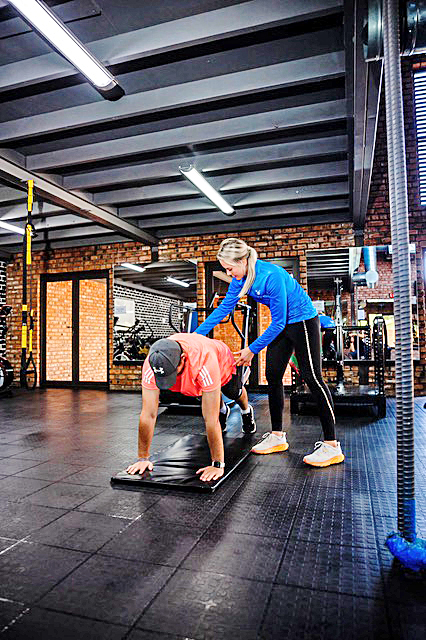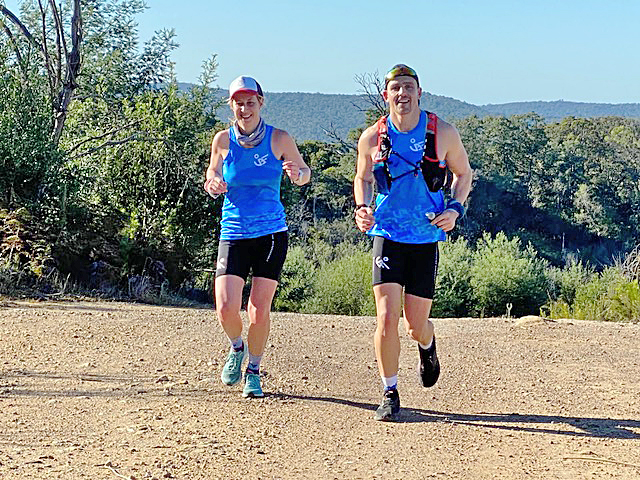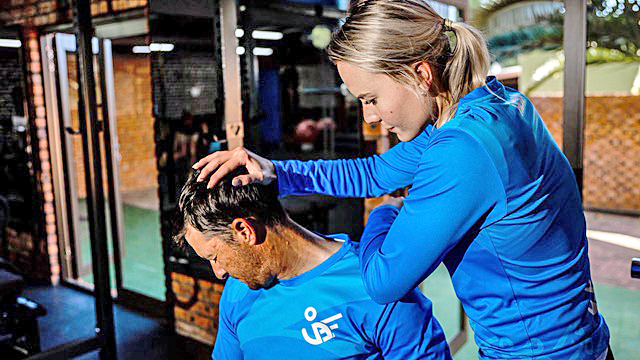Know what it takes to achieve your running goals—from choosing the best gear to a well-balanced diet & strength training
Herman Liebenberg
Running might be a daunting thought for many, especially if you are a non-runner or even new to the sport. Knowing the ins and outs of running and how to manage it, can help you shift your thoughts from daunting to a positive outlook on the sport. But what it takes to successfully train and achieve your goals? From novice to experienced, you can always learn something that can have an impact on your running.
Goal Setting
Setting a goal might be the missing piece of creating a successful training habit. Having something specific you want to work for, can make it easy to stay consistent. Consistency is what many are lacking, it is also where you get fitter, faster and become a stronger runner.
Identifying a goal that is unique to what you want to achieve, something that is worth putting in hours, even if it means to do so when you don’t feel like it. This goal must be realistic to what you can achieve and realistic to your ability as a runner. To aim for a marathon as your first race without a running background, might be a tough task to put on to your list. Although this is not impossible, its not recommended to bite off a chunk too big to chew.
It is very important to know exactly how much time you have available to spend on training. Often people get caught up in underestimating what it takes to train for a specific event. If you get this wrong, you might end up causing chaos to an already chaotic situation. Planning an event well in advance gives you adequate time to prepare without having to rush important building blocks. Rushing into events can lead to overtraining and eventually injury.
With a clear plan and vision, reaching goals will be much easier. Part of planning is getting a program from a trusted running coach. This not only ensures a researched and well-designed program, but also something to keep you accountable to your goal and program.

Picking up the program
Choosing a program that works best for you is tough. It might even take a few tests and trials to understand and discover what type of program and philosophy your body and mind best adapts to. When searching for that perfect program keep in mind some key aspects of what can make the marginal difference between reaching your desired time and missing by a mile?
Progression is crucial. Don’t get caught up in running the same workouts week in and week out. Depending on what your program focus is on, you need to progressively increase your workouts either by distance, duration, volume, or intensity. This is a term called progressive overload, where your body is constantly challenged in a safe manner. This causes your body to respond on a physiological level and eventually results in you becoming a faster, fitter, or stronger runner for longer. Long runs can be progressed by as much as 8-10% per week.
Work versus rest is how we manage a program. This can be on different levels. From work weeks to rest weeks or workdays to rest days. All coaches have different philosophies. My personal preference for work vs rest is based on a three vs one method. Three weeks of progressively building from week one to week three and then followed a week of recovery. Recovery does not say a total rest week. Recovery still working hard, but for shorter duration. We keep intensity as usual and cut down on volume.
Working too hard for too long can lead to fatigue kicking in early and can lead to missed workouts or sub-par performances.
Another important part is hard workouts versus easy workouts. This forms part of the bigger picture as mentioned above. Strategically planning hard days followed by easy days will give your body enough time to rest and recover, allowing a fresh body for upcoming hard days. There is no benefit in doing a hard day with a sub-par performance. The desired outcome won’t be met, and the session will be unsuccessful. Hard workouts can be seen as time trials, sprints or intervals and hill repeats. Easy days are recovery workouts or easy runs. Also sometimes referred to as junk miles.
Choosing the right gear
The most important piece of equipment is without a doubt the type of shoes you run in. To start off you will need to know whether you are a runner with a neutral foot contact or a runner that goes into over pronation when the foot contacts the ground.
Furthermore, it is important to have knowledge about different types of shoe brands. Some brands have different models for specific distances and purposes.
Choose a shoe that fits comfortable, feels good and have the necessary characteristics you need to perform at your best. Simple things like tying your shoelacesand thickness of a sock can play a role in how comfortable a shoe fits. Wearing the wrong socks can cause chafing and blisters leading to a very unpleasant experience. Regularly changing your socks can solve many problems. Some runners even have specific socks for racing and training.
Wearing clothes that fits properly can avoid unwanted chafing. Chafing is uncomfortable and often changes your posture when running. A change in posture can lead to overuse of certain muscles and eventually short-term pain or irritation. Never try out new gear or clothing on race day.
Knowing your distance, pace or heart rate is vital to following a program successfully. Most programs are designed according to duration or distance and sometimes with heart rate. Having a watch that can track your distance, duration and heart rate can take your training to the next level. Giving you more confidence in your program and preparation.
Eat right!
Running is an activity that requires a great deal of energy and endurance, and proper nutrition is key to fueling the body for both training and racing. However, the nutritional needs of a runner can differ significantly depending on whether they are in training mode or race mode.
Training Nutrition:
Training for a race can be a long and grueling process, and the body requires adequate fuel to keep up with the demands of regular exercise. During training, a runner should focus on eating a well-balanced diet that includes carbohydrates, protein, and healthy fats.
Carbohydrates are especially important for providing energy during training. Runners should aim to consume complex carbohydrates, such as whole grains, fruits, and vegetables, which provide a slow and steady release of energy. Simple carbohydrates, such as sugary snacks and drinks, should be avoided, as they can cause spikes in blood sugar levels that can lead to crashes later on.
Protein is also important for runners, as it helps repair and rebuild muscles after exercise. Good sources of protein include lean meats, fish, eggs, beans, and tofu.
Healthy fats are also essential for providing sustained energy during training. Runners should aim to consume sources of healthy fats such as avocados, nuts, seeds, and olive oil.
Race Nutrition:
When it comes to race day, the nutritional needs of a runner can change significantly. During a race, the goal is to provide the body with quick bursts of energy to sustain high levels of effort over a shorter period.
Many runners choose to consume energy gels, chews, or drinks during a race to quickly replenish their energy stores. These products are typically high in simple carbohydrates, which can provide a quick burst of energy when needed.
However, it’s important to be mindful of how much and how often you consume these products during a race. Consuming too much at once can lead to stomach upset, and consuming too little may not provide the energy boost you need to finish strong.
In addition to energy products, some runners also choose to consume electrolyte drinks during a race to help replace lost minerals and prevent cramping. However, as with any new food or drink, it’s important to test these products out during training runs to make sure they don’t cause any adverse reactions.
During training, runners should focus on eating a well-balanced diet that includes carbohydrates, protein, and healthy fats, and staying well hydrated. On race day, runners may need to adjust their nutritional intake to provide quick bursts of energy and electrolytes as needed. By fueling the body properly, runners can achieve their goals and perform at their best.
Strength Training and Recovery Strategies
Strength training is an essential component of any well-rounded training program for runners. While running is a great way to build cardiovascular fitness and endurance, strength training helps to build muscular strength and endurance, improve overall body mechanics, and prevent injuries.

Here are some reasons why strength training is important for running:
Improves Running Form and Efficiency:
Strength training exercises help to improve overall body mechanics and posture, which in turn improves running form and efficiency. By strengthening muscles such as the calf muscles, glutes, hamstrings, and core, runners are able to maintain proper alignment and reduce the risk of injuries caused by poor form.
Builds Muscular Strength and Endurance:
Running is a high-impact activity that puts a lot of stress on the body. By incorporating strength training exercises into their training program, runners can build muscular strength and endurance, which can help improve performance and reduce the risk of injury.
Reduces Risk of Injuries:
Strength training can also help to reduce the risk of common running injuries such as shin splints, IT band syndrome, and plantar fasciitis. By strengthening the muscles and connective tissues that support the joints, runners can reduce the impact of running on the body and reduce the risk of injury.
Increases Bone Density:
Strength training can also help to increase bone density, which is important for runners, especially as they age. Strong bones can help reduce the risk of stress fractures and other injuries caused by weakened bones.
Examples of Strength Training Exercises for Runners:
Some examples of strength training exercises that can be beneficial for runners include:
- Single Leg Exercises: Single leg exercises such as single leg squats are an effective way to build lower body strength and target muscles such as the quadriceps, hamstrings, and glutes.
- Single Leg calf raises: Single leg calf raises are another great exercise for building lower leg strength and improving balance and stability of your lower leg and foot.
- Deadlifts: Deadlifts can help runners build strength in their back, hips, and legs, and can also help improve posture and form.
- Planks: Planks are an excellent core exercise that can help runners build stability and prevent lower back pain when running.
To incorporate strength training into your running routine, aim to strength train 2-3 times per week, focusing on exercises that target the muscles used in running. Be sure to warm up properly before beginning your strength training workout, and listen to your body to avoid overtraining or injury.
By incorporating strength training into your running routine, you can improve your running form, reduce your risk of injury, and ultimately become a stronger and more efficient runner.
Recovery
Recovery modalities are an important component of any training program for runners, as they help the body to recover from the physical stress of running, reduce muscle soreness and fatigue, and prevent injury. Here are some common recovery modalities that can be beneficial for runners:
Foam Rolling:
Foam rolling is a form of self-massage that can help to reduce muscle tension and soreness. By rolling over tight muscles, runners can increase blood flow to the affected area, which can help to reduce inflammation and improve recovery time.
Stretching:
Stretching is another important recovery modality for runners. By stretching the muscles used during running, runners can improve flexibility, prevent muscle imbalances, and reduce the risk of injury.
Massage Therapy:
Massage therapy is another effective recovery modality for runners. By applying pressure to the muscles and connective tissues, massage therapy can help to improve circulation, reduce muscle tension, and promote relaxation and recovery.
Active Recovery:
Active recovery is a form of low-intensity exercise that can help to promote recovery and reduce muscle soreness. Examples of active recovery activities include walking, cycling, and swimming.
Sleep:
Sleep is essential for recovery, as it’s during this time that the body repairs and regenerates tissues. Adequate sleep also helps to reduce inflammation, promote muscle growth, and improve cognitive function. For runners, getting enough sleep can help improve performance, reduce muscle soreness, and prevent injury.
Nutrition:
Nutrition plays a critical role in recovery for runners. Proper nutrition helps to refuel the body with essential nutrients and energy, rebuild muscle tissue, and reduce inflammation. Runners should focus on consuming a balanced diet with a mix of carbohydrates, protein, and healthy fats. In addition, consuming foods that are high in antioxidants can help to reduce inflammation and promote recovery.
Hydration:
Hydration is essential for recovery, as water plays a critical role in regulating body temperature, lubricating joints, and removing waste products from the body. Runners should aim to drink water regularly throughout the day and during exercise to prevent dehydration. It’s also important to replace electrolytes lost through sweating, as these minerals play a critical role in muscle function and recovery.
To incorporate recovery modalities into your running routine, it’s important to set aside time for these activities on a regular basis. Aim to stretch after every run and incorporate foam rolling and massage therapy as needed.
In a nutshell
Mostly, it’s also important to listen to your body and adjust your training program as needed. If you’re feeling sore or fatigued, take a rest day or adjust the intensity of your workouts. By incorporating recovery modalities into your training program, you can improve your overall performance and reduce your risk of injury, ultimately leading to a more enjoyable and successful running experience.





